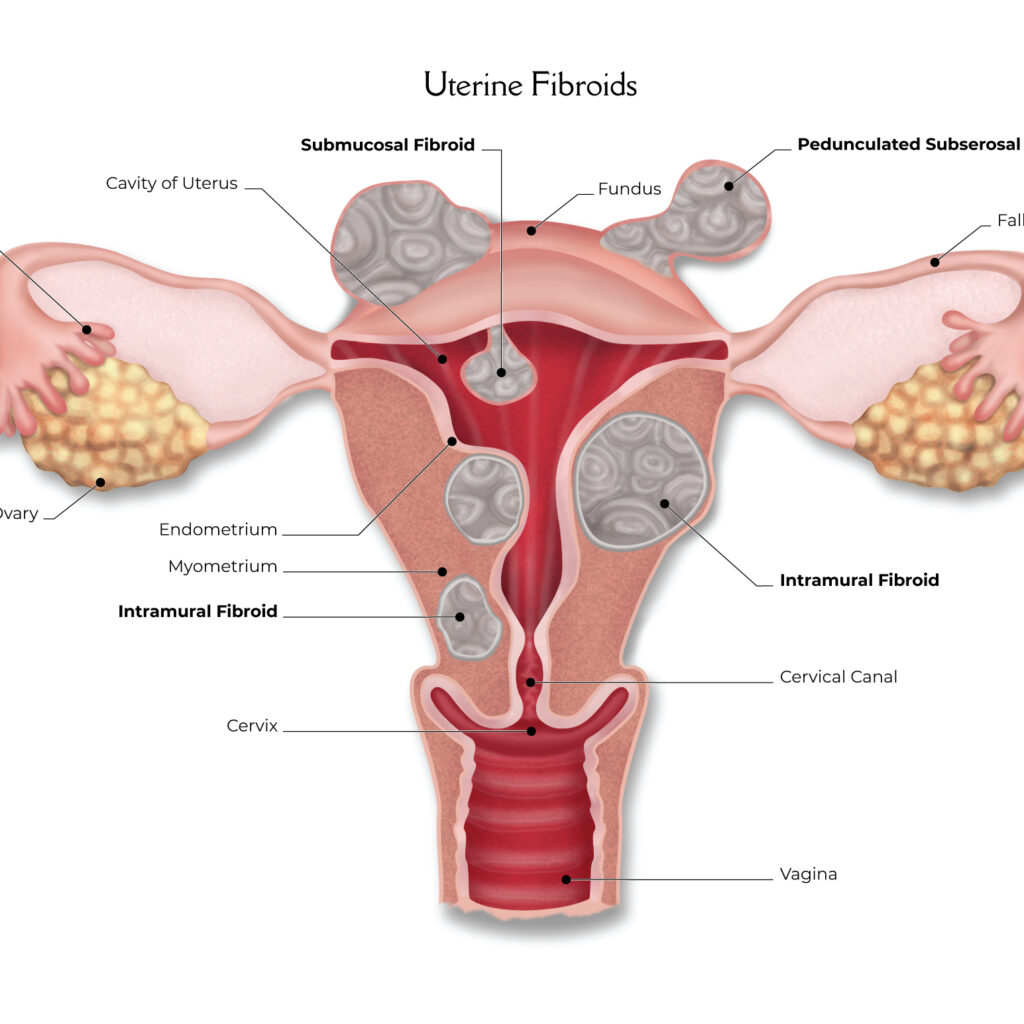Throughout his career in medicine, Dr. Farr Nezhat has led the way when it comes to safe, effective uterine fibroid treatment. Patients travel from across the globe to have the best uterine fibroid specialist in New York diagnose their condition and treat it using his pioneering techniques in minimally invasive surgery. Discover why today.
What are uterine fibroids?
Uterine fibroids are non-cancerous (benign) growths made up of muscle cells and connective tissue. They are very common, affecting between 40% and 80% of women. They are also referred to as leiomyomas or myomas.
They are often small and do not cause issues, but depending on their size, location and quantity can be quite troublesome.
Their size and location vary dramatically and they are classified based mainly on their location. Submucosal fibroids are located just under the layer of tissue lining the uterus (the endometrium). Intramural fibroids are embedded in the wall of the uterus. Subserosal fibroids are located on the outer wall of the uterus. Cervical fibroids are located in the cervix. Intraligamentary fibroids are located in the connective tissue next to the uterus. Pedunculated fibroids are connected by a stalk to the surface of the uterus and may be submucosal or subserosal.
What are the symptoms of uterine fibroids?
Uterine fibroids most often cause symptoms between the ages of 20 and 50. Though they often do not cause any symptoms, if they are larger they can push against neighboring organs such as the bladder and bowel causing various symptoms.
- Heavy menstrual bleeding
- Irregular menstrual bleeding
- Menstrual periods lasting more than one week
- Pelvic pain or pressure (severe, diffuse, or like menstrual cramping)
- Anemia (due to blood loss from heavy menstrual periods)
- Increased urge to urinate
- Urinary retention (difficulty emptying the bladder)
- Constipation
- Back or leg pain
- Miscarriage
- Infertility
Fibroids usually do not negatively impact fertility, but occasionally they do, particularly if they are located in the cavity of the uterus just under the layer of tissue lining the uterus (endometrium) where they may prevent implantation of the embryo.
What are the risk factors for uterine fibroids?
The cause of uterine fibroids is not known and there is no way to predict who will get them, but there are certain factors which make a woman more likely to develop fibroids.
- Black women are more likely to have fibroids (for unknown reasons)
- Never having been pregnant
- Having a mother or sister with fibroids
- Onset of menstruation at an early age
- Being overweight or obese
What treatment options does Dr. Nezhat offer for uterine fibroids?
Dr. Nezhat specializes in the application of minimally invasive surgical techniques to treat uterine fibroids. Surgery for removal of fibroids is referred to as myomectomy. Myomectomy was historically performed via open surgery, but Dr. Nezhat performs myomectomy hysteroscopically (surgically through the vagina and cervix), or laparoscopically or robotically through small incisions.
Sometimes open surgery is required, but the ultimate goal is to utilize the smallest incisions to remove all visible signs of disease and optimize outcome.
Dr. Nezhat has published extensively on the utility, safety and efficacy of minimally invasive surgery for gynecological pathologies.
A listing of over 226 of Dr. Nezhat’s research articles can be found at the PubMed search engine, which pulls references and abstracts from the U.S. National Library of Medicine (NLM) database maintained at the National Institutes of Health (NIH).

